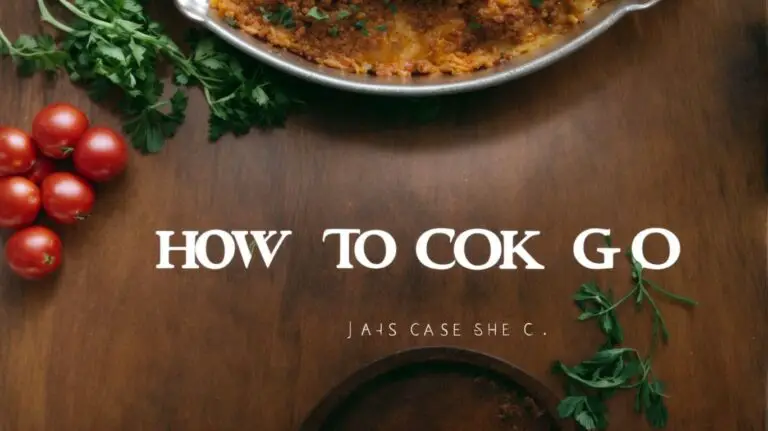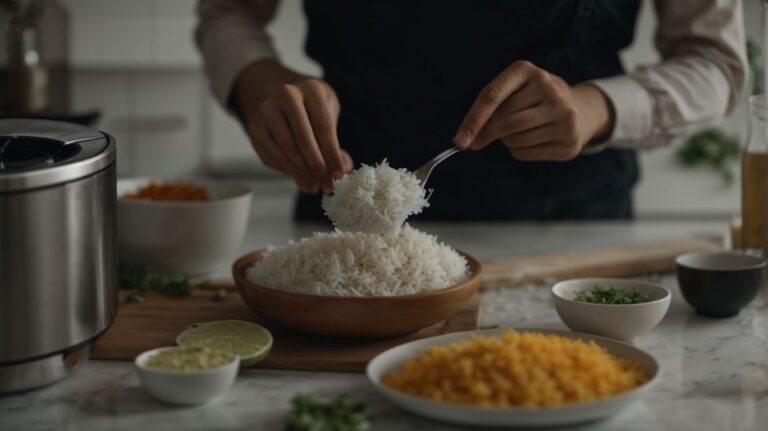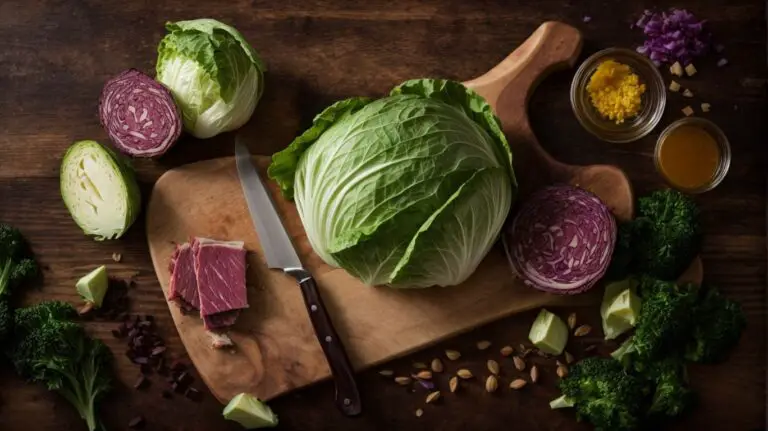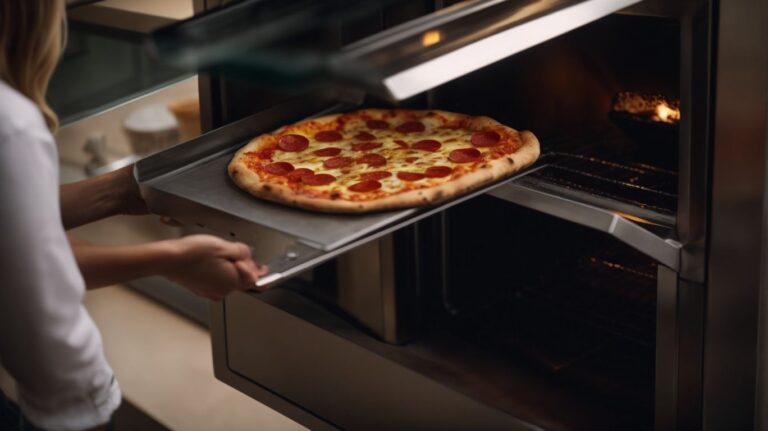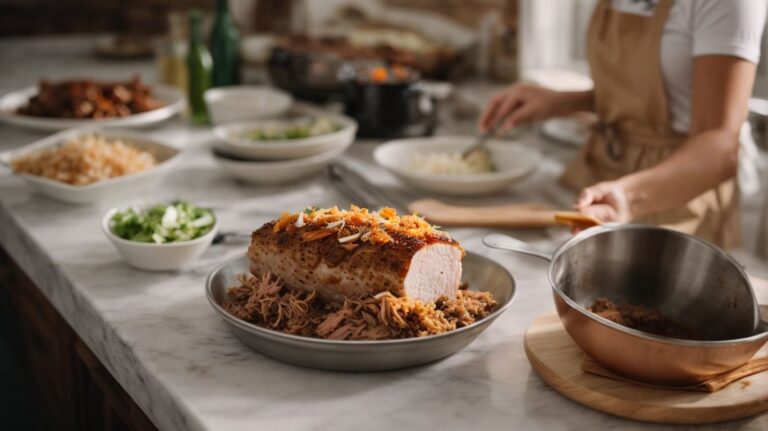How to Cook Garlic Without Burning?
Garlic is a staple ingredient in many cuisines worldwide, valued for its aromatic flavor and health benefits.
Cooking garlic requires care to avoid burning and ruining your dish.
We will discuss the importance of knowing how to cook garlic without burning, explore different cooking methods, and share tips for cooking garlic perfectly.
Discover how to enhance your culinary skills and delight your taste buds with perfectly cooked garlic!
Key Takeaways:
Why is it Important to Know How to Cook Garlic Without Burning?

Credits: Poormet.Com – Zachary Rivera
Mastering the art of cooking garlic without burning is crucial for achieving the perfect balance of flavors in your dishes.
When garlic is burned during the cooking process, it can turn bitter and overwhelm the dish with an unpleasant acrid taste, completely altering the intended flavor profile. To avoid this culinary catastrophe, it’s important to control the cooking temperature and duration when working with garlic.
Whether you are sautéing vegetables, preparing a pasta sauce, or marinating meats, using proper garlic cooking techniques is essential. For example, when making a delicate garlic-infused oil, gently heating the garlic in the oil over low heat ensures a subtle garlic essence without any burnt undertones.
What are the Different Ways to Cook Garlic?
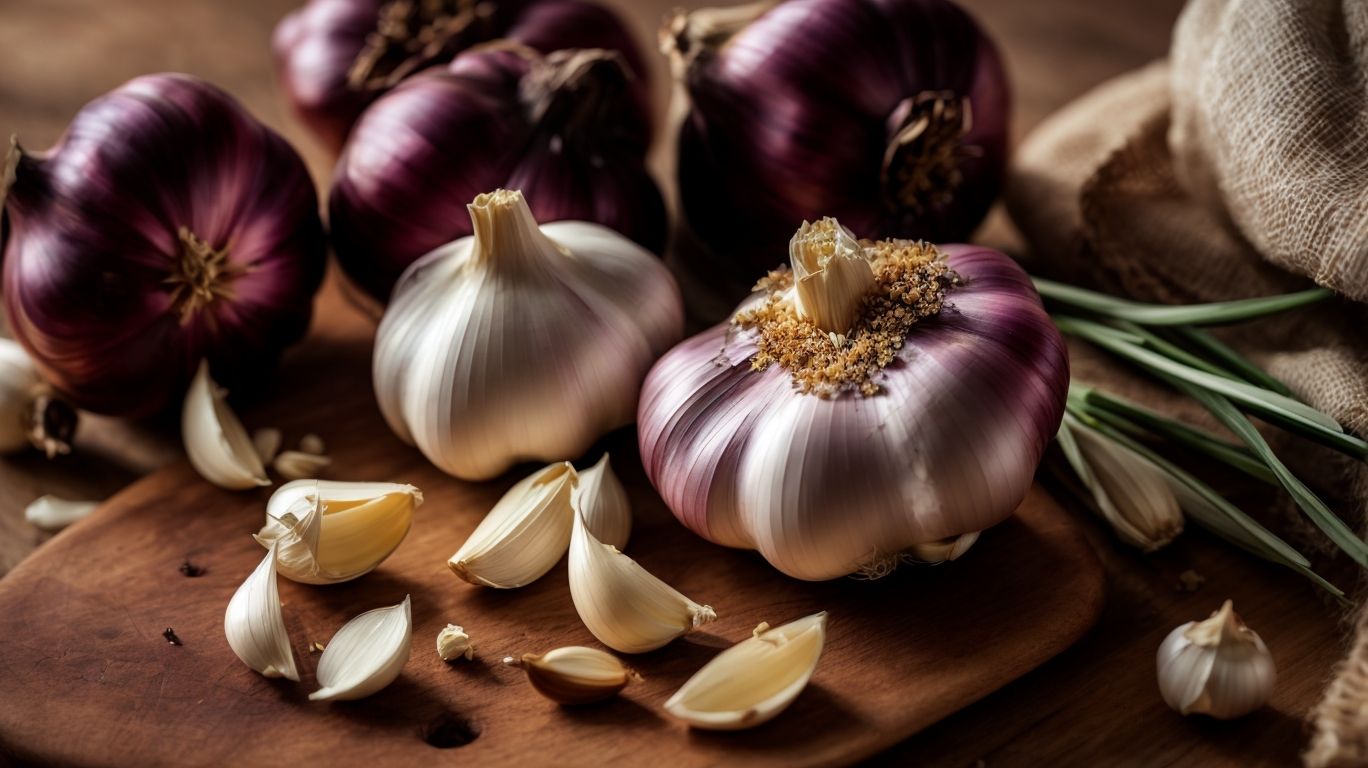
Credits: Poormet.Com – Logan Rodriguez
Garlic can be cooked in various ways to impart distinct flavors and textures to dishes, including sautéing, roasting, boiling, grilling, and microwaving.
Sautéing garlic involves cooking it swiftly in a hot pan with butter or oil until golden brown, releasing a fragrant aroma that enhances the overall flavor profile of the dish. It is commonly used in pasta sauces, stir-fries, and sautéed vegetables.
Roasting garlic brings out its natural sweetness and creates a creamy, caramelized texture. Simply drizzle whole garlic bulbs with olive oil, wrap them in foil, and bake until soft. Roasted garlic is perfect for spreading on bread or incorporating into mashed potatoes.
Boiling garlic is a milder cooking method that softens its pungent taste, making it ideal for infusing flavor into soups, broths, and sauces. Boiled garlic cloves can be easily mashed into a paste for dressings and marinades.
Grilling garlic adds a subtle smokiness and charred aroma to the cloves. Skewer whole garlic heads or individual cloves, brush with oil, and grill until tender. Grilled garlic is a flavorful addition to meats, vegetables, and even bread.
Microwaving garlic is a quick and convenient way to cook it. Place peeled cloves in a microwave-safe dish, add a splash of water, cover, and microwave in short intervals until soft. Microwaved garlic is excellent for making garlic-infused oils or dips.
Sautéing Garlic
Sautéing garlic involves cooking it in a pan with moderate heat until the cloves turn a delightful golden brown, releasing a rich aroma and flavor.
When sautéing garlic, you want to start with a non-stick skillet or a cast-iron pan. These choices help distribute the heat evenly, ensuring that each clove of garlic gets the right amount of heat for that perfect golden hue. As garlic cooks, keep a watchful eye for the visual cues – the color should gradually turn from white to golden brown. Stirring frequently is key to prevent uneven cooking.
Controlling the cooking time is crucial; too long on the heat and your garlic can quickly burn, turning bitter and ruining the dish. The aromatic transformation of garlic during sautéing is truly captivating, as its pungent raw flavor mellows into a sweet, nutty essence, enhancing the overall taste of your recipe.
Roasting Garlic
Roasting garlic in the oven results in soft, caramelized cloves with a deep, sweet flavor and a golden brown hue, perfect for spreading on bread or incorporating into dips.
To start, preheat the oven to 400°F (200°C). Take a whole head of garlic and slice off the top to expose the cloves. Drizzle olive oil over the top, allowing it to seep into the crevices. Wrap the garlic head in foil to keep it intact and place it on a baking sheet. Roast for about 30-40 minutes until the cloves are tender and have transformed into a rich, golden color, emitting a tantalizing aroma.
Boiling Garlic
Boiling garlic in water can soften the cloves and mellow their pungency, making them suitable for incorporating into soups, sauces, or infusions.
When garlic is boiled, the harshness of its flavor is toned down, allowing it to blend seamlessly into a variety of dishes. The process of boiling garlic involves simmering the cloves in water until they become tender and lose their raw edge. This technique not only alters the texture of garlic, making it creamy and spreadable, but also infuses the cooking liquid with a subtle garlic essence.
Grilling Garlic
Grilling garlic over an open flame imparts a smoky flavor and a caramelized exterior to the cloves, elevating the taste profile of grilled dishes.
When grilling garlic directly over heat, the cloves transform into a soft, velvety texture filled with an intensified sweetness that perfectly balances the charred edges. This technique not only infuses the garlic with a distinct smokiness but also creates a depth of flavor that enhances the overall dish. Grilled garlic can be used in various culinary applications, from marinades for meats to rubs for seafood, or even as a flavorful addition to roasted vegetable dishes. Its versatility in elevating the taste and aroma of a wide range of foods makes it a prized ingredient for enhancing dishes in an effortless yet impactful manner.
Microwaving Garlic
Microwaving garlic is a quick and convenient method to soften the cloves and infuse them with a mild garlic flavor, suitable for rapid meal preparation.
One of the greatest advantages of microwaving garlic is the time efficiency it offers. Instead of relying on traditional stovetop methods that may take longer, popping garlic into the microwave can significantly speed up the process.
By using the microwave, busy cooks can save precious minutes without compromising on taste.
This technique can be particularly handy when you need garlic quickly for a recipe but don’t want to spend extra time mincing or sautéing it.
What are the Tips and Tricks for Cooking Garlic Without Burning?
To avoid burning garlic, follow essential tips such as using low heat, preheating the pan, adding garlic towards the end of cooking, utilizing garlic-infused oil, and employing a garlic press for efficient preparation.
Garlic is a versatile ingredient that can elevate the flavor of numerous dishes, but it can quickly turn bitter when burnt. When cooking, ensure the heat is kept low to prevent scorching the delicate garlic cloves. Preheating the pan beforehand helps in distributing heat evenly and reduces the risk of burning. Timing is crucial – add the minced or sliced garlic only towards the end of the cooking process to preserve its pungent aroma.
Garlic-infused oil can be a handy alternative, offering the flavor without the risk of burning the garlic itself. Using a garlic press saves time and effort, providing a quick and uniform mince for your recipes.
Use Low Heat
Employing low heat when cooking garlic helps preserve its delicate flavors and prevents it from burning, ensuring a delightful aroma and taste in your dishes.
Garlic, with its unique pungent yet savory profile, can transform a dish from ordinary to extraordinary when handled correctly. It’s crucial to avoid overheating garlic as it can turn bitter and acrid, compromising the overall balance of flavors in your culinary creations.
By gently sautéing garlic at a low temperature, you not only retain its subtle sweetness but also allow its aromatic compounds to infuse the dish gradually, enhancing the depth of flavor. Patience is key when working with garlic; a slow and steady approach ensures that each clove releases its essence harmoniously.
Preheat the Pan
Preheating the pan before adding garlic ensures a consistent cooking temperature, facilitating the golden brown coloration of the cloves without scorching them.
When you place garlic in a cold pan, the heat gradually increases, risking uneven cooking and burning, resulting in bitter flavors. On the contrary, starting with a well-heated pan allows the garlic’s natural oils to release slowly, infusing dishes with a delightful aroma. The sizzle of garlic hitting the hot surface signifies the start of a flavorful journey where each clove evenly transforms into a caramelized masterpiece. So, remember, for the perfect garlic-infused dish, always give your pan the time it needs to reach that optimal temperature before introducing the cloves. Your taste buds will thank you later!
Add Garlic Towards the End of Cooking
Incorporating garlic towards the end of the cooking process prevents premature browning and ensures that its flavors infuse the dish without the risk of burning, enhancing the overall taste.
This strategy is particularly useful in delicate sauces and stir-fries, such as scampi or garlic butter shrimp, where the subtle nuances of garlic can easily be lost if added too early. By allowing the garlic to cook for a shorter period, its pungency is preserved, adding a robust aromatic note to the dish.
Use Garlic Infused Oil
Substituting regular oil with garlic-infused oil imparts a subtle garlic flavor to dishes, enhancing their aromatic profile without the risk of burning the garlic cloves.
Garlic-infused oil offers a convenient way to incorporate the essence of garlic into your cooking without the need for peeling and mincing cloves.
Its versatility shines through in a myriad of recipes from pasta dishes to marinades and dressings, providing a well-rounded flavor boost.
By infusing the oil with garlic over low heat, the oil absorbs the garlic essence, imparting a gentle aroma and taste that harmonizes effortlessly with a variety of ingredients.
Whether drizzled over roasted vegetables or used as a base for sautéing meats, garlic-infused oil elevates the culinary experience by adding depth and complexity to dishes.
Use a Garlic Press
Utilizing a garlic press simplifies the preparation of minced garlic cloves, ensuring uniformity in texture and facilitating the incorporation of garlic into dishes with ease.
One of the key benefits of using a garlic press is the time-saving aspect it brings to your cooking routine. Instead of tediously mincing garlic cloves by hand, the press does the job efficiently and swiftly. This not only speeds up the preparation process but also allows for a more consistent garlic flavor profile throughout your dishes.
By achieving a consistent mince, the garlic press ensures that the flavor of the garlic distributes evenly in your recipes, enhancing the overall taste. No more worrying about unevenly sized garlic pieces affecting the flavor balance of your meal!
What are Some Common Mistakes When Cooking Garlic?
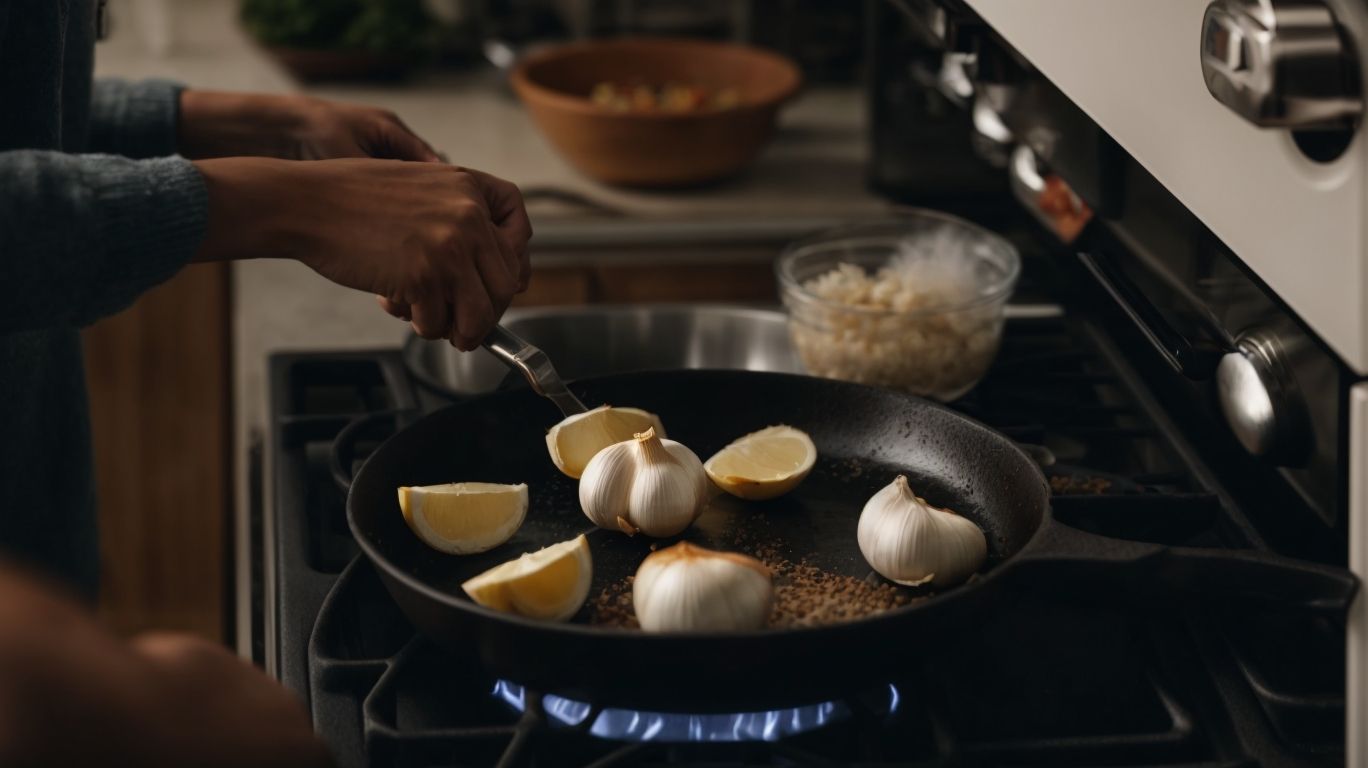
Credits: Poormet.Com – Philip White
Avoid common errors in garlic cooking, such as subjecting it to high heat, improper preparation, leaving it unattended, or using old and burnt garlic that can compromise the dish’s flavor and aroma.
When garlic is exposed to high heat, it tends to burn quickly, turning bitter and imparting a harsh taste to your dish. To prevent this, consider reducing the heat and allowing the garlic to cook gently, releasing its sweet and aromatic flavors.
Properly preparing garlic involves peeling, crushing, mincing, or slicing it based on your recipe’s requirements. This helps extract the maximum flavor from the garlic cloves and evenly distribute it throughout the dish.
Leaving garlic unattended during cooking can lead to it being overcooked, resulting in a pungent and unpleasant taste. Watch the garlic while cooking, stirring it frequently to prevent it from burning or sticking to the pan.
Using old or burnt garlic past its prime can significantly diminish the overall taste of your dish. Always opt for fresh garlic cloves and discard any that show signs of browning or are no longer firm to the touch.
Using High Heat
One of the common pitfalls in garlic cooking is exposing it to high heat, which can lead to quick browning and burning, resulting in a bitter and acrid taste.
Garlic, a versatile ingredient in numerous cuisines worldwide, offers a distinctive aroma and flavor profile when cooked to perfection. To avoid the negative effects of excessive heat, consider starting with medium heat to gently sauté garlic cloves in a splash of olive oil. This allows the garlic to release its flavors gradually without scorching. Stirring frequently and keeping a close eye on the pan can prevent any premature burning. By adjusting heat levels and employing attentive cooking techniques, you can elevate your dishes with perfectly sautéed garlic.
Not Preparing Garlic Properly
Inadequate garlic preparation, such as improper chopping or insufficient incorporation into dishes, can result in uneven cooking and inconsistent flavor distribution.
In terms of preparing garlic, attention to detail is key. One of the fundamental aspects is achieving a consistent chop. Whether you prefer a fine mince or larger chunks, ensuring uniformity in the size of the garlic pieces will allow for even cooking and flavor distribution.
Selecting the right ingredients to pair with garlic can elevate the overall taste profile of a dish. Whether it’s the sweetness of roasted vegetables, the acidity of tomatoes, or the richness of meats, garlic can complement a wide array of flavors.
Leaving Garlic Unattended
Leaving garlic unattended during the cooking process can result in uneven browning, burning, or excessive infusion of its flavors, detracting from the desired taste profile of the dish.
To maintain control over the cooking process and ensure that garlic enhances the dish without overpowering other flavors, it’s crucial to monitor it closely. Watch the heat level, adjusting it as needed to prevent the garlic from burning. Remember that burnt garlic can impart a bitter taste that can ruin the entire dish. Additionally, stirring the garlic frequently while cooking helps distribute its flavor evenly throughout the dish, preventing pockets of intense garlic taste. By staying attentive and employing these techniques, you can harness the wonderful flavor of garlic without any unwanted drawbacks.
Using Old or Burnt Garlic
Utilizing old or burnt garlic in recipes can spoil the dish’s taste and aroma, as stale cloves lack freshness and burnt pieces introduce bitter notes that compromise the overall flavor.
When garlic ages, it loses its essential oils, which are crucial for providing that distinctive garlic flavor we all love. The bitterness from burnt garlic can overpower the dish, leaving an unpleasant aftertaste lingering in your mouth.
Identifying spoiled garlic involves inspecting for mold, soft spots, or discoloration. To ensure your dishes achieve their full potential, always opt for fresh garlic with plump, firm bulbs and smooth skin. When substituting old garlic, consider using similar amounts of fresh garlic to maintain the intended flavor profile of your recipe.
Conclusion: Cooking Garlic to Perfection
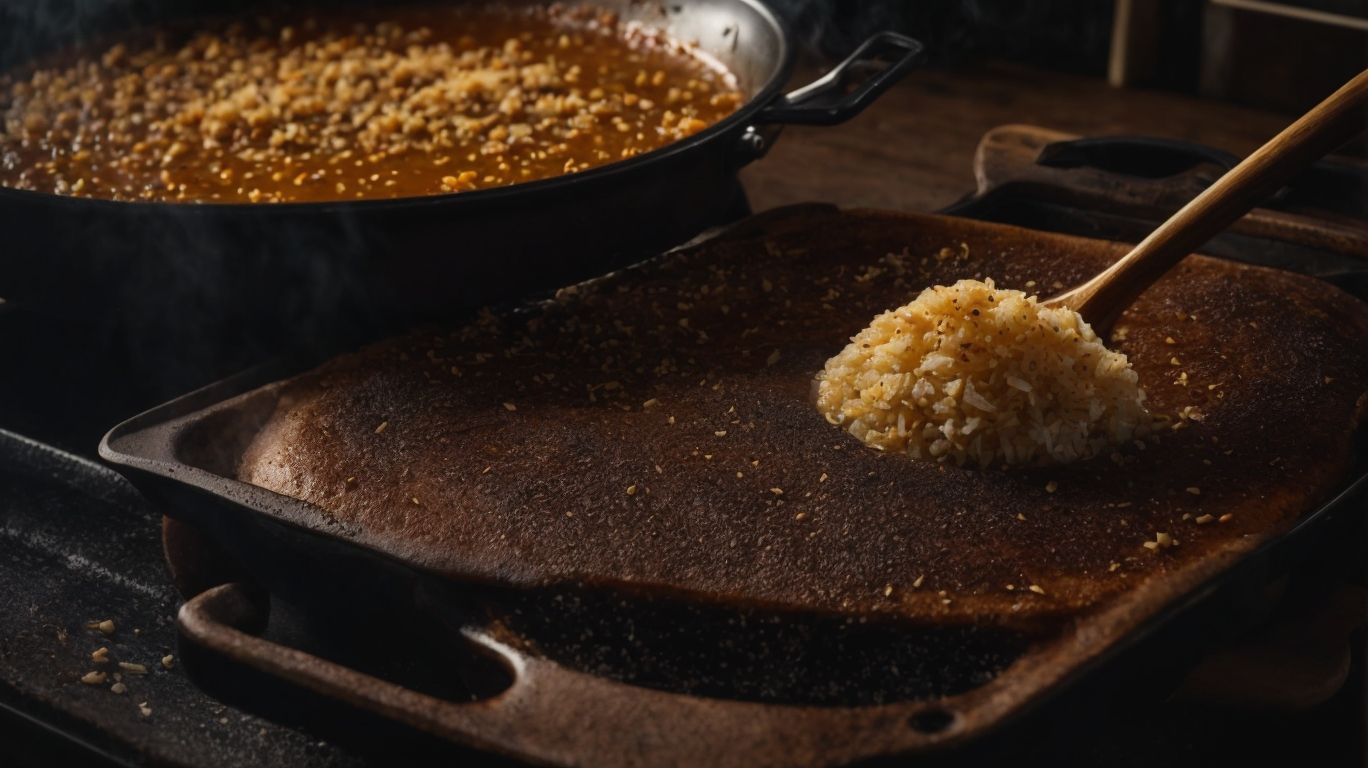
Credits: Poormet.Com – Michael Lopez
Mastering the art of cooking garlic without burning is a skill that elevates the essence of dishes, enhancing their flavors and aromas for a delightful culinary experience.
When garlic is sautéed or roasted just right, it releases its sweet and nutty undertones, transforming into a flavorful addition to any dish. To achieve this, it’s crucial to slice or chop the garlic uniformly to ensure even cooking. Controlling the heat is another critical aspect – gently cooking the garlic over low to medium heat prevents it from turning bitter.
Frequently Asked Questions
How to Cook Garlic Without Burning?
Garlic is a staple ingredient in many dishes, but it can quickly go from perfectly golden to burnt and bitter. Here are some tips for cooking garlic without burning it.
Why does garlic burn so easily?
Garlic has a high sugar content which causes it to burn quickly when exposed to high heat. It also contains sulfur compounds that can easily turn bitter when overcooked.
What is the best method for cooking garlic without burning?
The best way to cook garlic without burning is to start with a lower heat and gradually increase it, while constantly stirring. This will prevent the garlic from burning and allow it to cook evenly.
Can I add oil to the pan when cooking garlic?
Adding oil to the pan can help prevent garlic from burning, but it’s important to use a high smoke point oil like canola or grapeseed oil. Also, be careful not to add too much oil, as this can also cause the garlic to burn.
How can I reduce the risk of burning garlic when using high heat?
If you need to use high heat when cooking garlic, you can minimize the risk of burning by slicing or crushing the garlic cloves before adding them to the pan. This will help the garlic cook more quickly and evenly.
What should I do if my garlic starts to burn?
If you notice your garlic starting to burn, immediately remove it from the heat and transfer it to a cool pan or plate. This will prevent it from cooking further and becoming bitter. You can also add a splash of water to the pan to cool it down.


